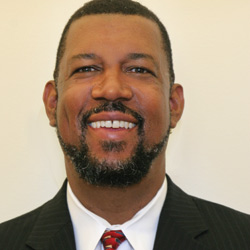
As our regional and national economies gradually rebound from the “Great Recession,” economists predict a “jobless recovery” for the next four to five years. This phenomenon may result in unemployment slowly receding, then hovering around eight percent for several years. This high unemployment results in increased numbers of dislocated and underemployed workers and a surplus of talent compared to available job openings. We have seen reports that there are currently about six workers for each available new job opening.
But behind the near-term reality of high unemployment rates, there are creeping demographic and economic trends that may have a larger impact on our future. These include the likely exodus of about 78 million baby boomers from the workforce over the next decade, to be replaced by about 48 million new workers. In addition, the new, global knowledge and innovation economy has created growth in occupations requiring increasing levels of education, knowledge, skills and abilities. These market forces will result in an uneven distribution and possible talent mismatches for available job openings. This means there will be more workers for fewer low-skilled jobs and fewer workers for an increasing number of higher skilled jobs. And despite the current reality of huge numbers of unemployed workers, there are projections of talent shortages for high-skilled jobs that will be critical to the continued growth of the American economy.
 Over the next decade, the Bureau of Labor Statistics (BLS) has projected that the fastest growing occupations will be in professional occupations; management, business and financial occupations; service occupations; and construction and extraction occupations. Nearly three-quarters of job growth will come from three areas: computer and math occupations; healthcare practitioners and technical occupations; and education, training and library occupations. Examples include:
Over the next decade, the Bureau of Labor Statistics (BLS) has projected that the fastest growing occupations will be in professional occupations; management, business and financial occupations; service occupations; and construction and extraction occupations. Nearly three-quarters of job growth will come from three areas: computer and math occupations; healthcare practitioners and technical occupations; and education, training and library occupations. Examples include:
- Employment in management, scientific and technical consulting services is anticipated to expand at a projected rate of 83 percent. Demand for these services will be spurred by the implementation of new technologies, the continued need for advice on planning and logistics, and compliance with workplace safety, environmental and employment regulations.
- The data processing, hosting and related services industry is expected to grow by 53 percent. This includes establishments that provide web application hosting and streaming services. Software publishing is expected to grow by 30 percent as organizations of all types continue to adopt the newest software products.
- Computer systems design and related services is expected to increase by 45 percent, driven by the growing demand for the design and integration of sophisticated networks and internet and intranet sites.
- About 26 percent of all new jobs created in the U.S. economy will be in the healthcare and social service industry. This industry, which includes public and private hospitals, nursing and residential care facilities, and individual and family services, is expected to grow by 24 percent. These occupations will include licensed nurses, healthcare practitioners and technicians, and pharmacy technicians. Employment will be driven by an aging population and longer life expectancies.
- Personal care services, including barbers, salons and spas are projected to grow by 32 percent. This industry will experience growing demand as individuals are seeking to improve their personal appearance.
- Employment in construction is expected to rise by 19 percent. Demand for commercial construction and an increase in road, bridge and tunnel construction will account for the bulk of job growth.
- Public and private educational services are also anticipated to grow by 12 percent due to rising student enrollments at all levels of education.
These occupations are examples of the increasing need for a highly skilled and educated workforce. According to a study from the Center on Education and the Workforce from Georgetown University, about 63 percent of all the jobs created over the next decade will require education and training beyond high school. The study predicts that by 2018, America will need 22 million new college degrees, but will fall short of that number by at least three million postsecondary degrees (associates’ degree or better). In addition, the U.S. will need at least 4.7 million new workers with postsecondary certificates. The study further projects a shortfall of about 300,000 college graduates every year between 2008 and 2018.
Additional research from the American Society for Training and Development reveals that businesses are also experiencing skills gaps in leadership and executive skills; basic workplace competencies; professional or industry-specific skills; managerial and supervisory skills; communication and interpersonal skills; technical, IT and systems skills; sales skills; and process and project management skills. Employers also identified other skills needed to compete in the knowledge economy, including adaptability, innovative thinking and action, and personal responsibility for life-long learning and career development.
In summary, the next decade will pose real challenges for us as we transition from recession-driven high rates of unemployment and talent surpluses to face the realities of a highly competitive global knowledge and innovation economy. These realities will mean a smaller talent pool and an economy that will require increased talent and skills from over 60 percent of the new jobs. Unfortunately, America is currently producing only 40 percent of our workforce with the requisite skills and training. In addition, some occupations requiring specialized math or science education and training may face severe talent shortages. Government, education, communities, businesses and workforce development systems will all have to develop strategies to meet this challenge. iBi

